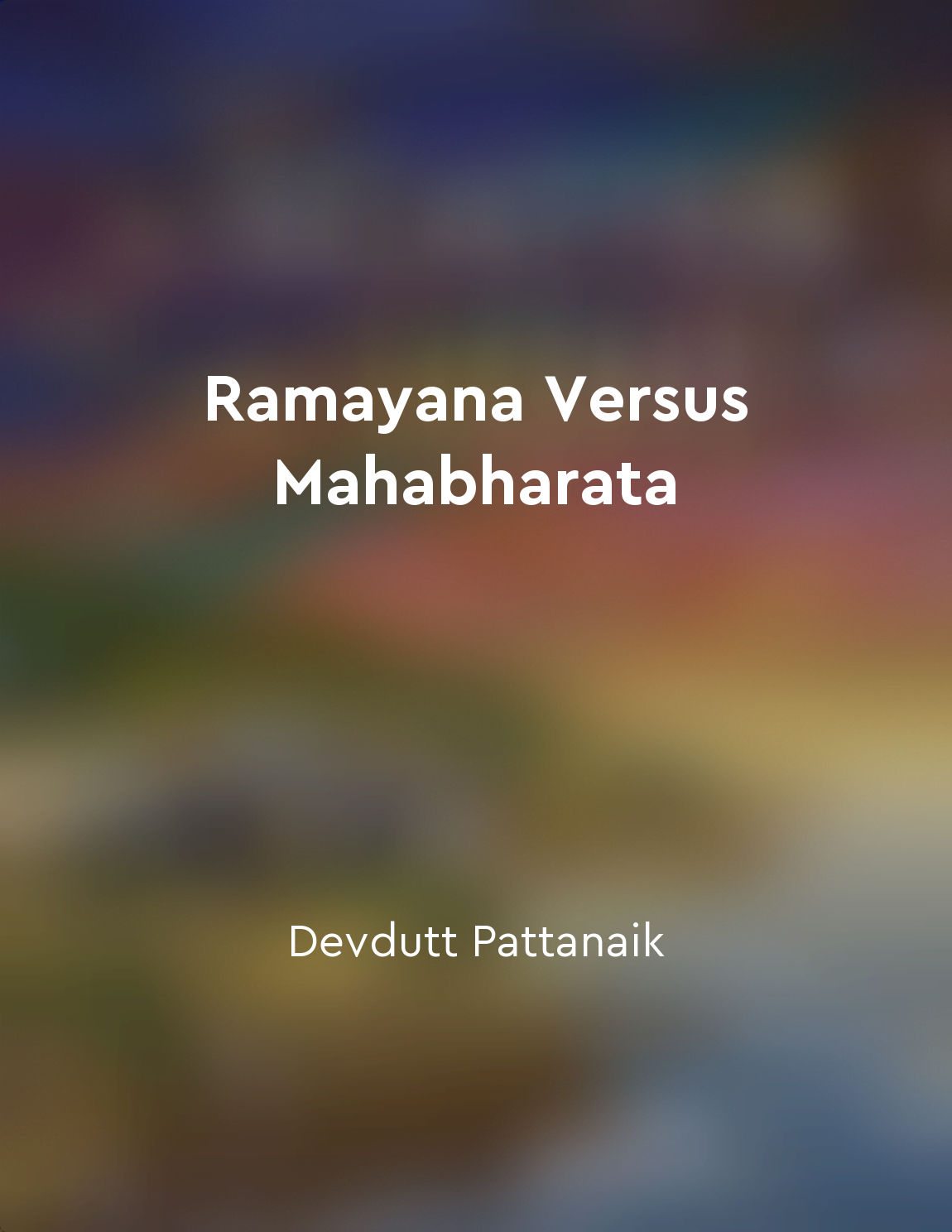Ramayana is idealistic, Mahabharata is realistic from "summary" of Ramayana Versus Mahabharata by Devdutt Pattanaik
In the Ramayana, characters are portrayed as either good or evil, with little room for ambiguity. The ideals of dharma and righteousness are upheld at all costs, even if it means sacrificing personal desires or relationships. The narrative follows a linear path, where good triumphs over evil in a clear-cut manner. The protagonist, Rama, is depicted as the epitome of virtue and is held up as a role model for society to emulate. His unwavering adherence to duty and honor sets the moral tone of the epic, ensuring that justice prevails in the end. Conversely, the Mahabharata is a complex and multi-layered narrative that delves into the gray areas of human nature. Characters are shown to possess both good and bad qualities, blurring the line between hero and villain. The epic explores the intricacies of relationships and the consequences of personal choices, highlighting the complexities of human behavior. Unlike the Ramayana, the Mahabharata does not offer easy solutions or moral absolutes. Instead, it challenges readers to think critically about the shades of gray that exist within each individual. The Ramayana presents an idealized version of reality, where divine intervention and supernatural beings play a significant role in shaping the narrative. The focus is on upholding traditional values and moral principles, reinforcing the importance of duty and righteousness. In contrast, the Mahabharata reflects a more realistic portrayal of life, where human flaws and conflicting emotions drive the actions of the characters. The epic acknowledges the messy and unpredictable nature of existence, showing how personal ambitions and moral dilemmas can lead to tragic consequences.- The distinction between the Ramayana and the Mahabharata lies in their approach to storytelling – one is characterized by idealism and moral clarity, while the other is marked by realism and moral ambiguity. Both epics offer valuable insights into the human experience, challenging readers to confront the complexities of life and morality. Through their contrasting narratives, the Ramayana and the Mahabharata continue to resonate with audiences, serving as timeless reflections of the human condition.


